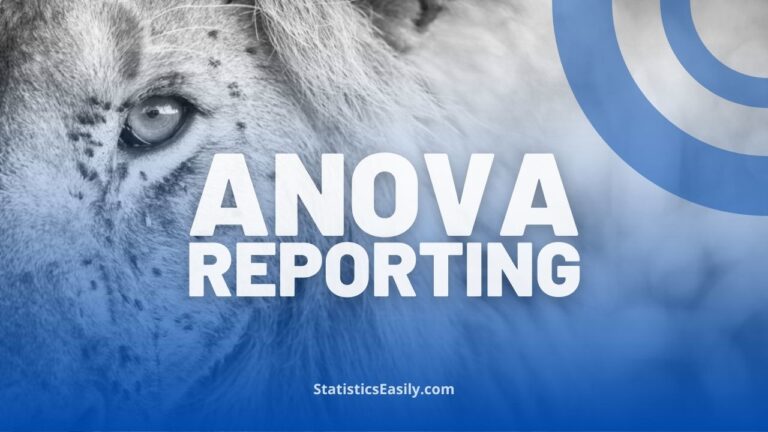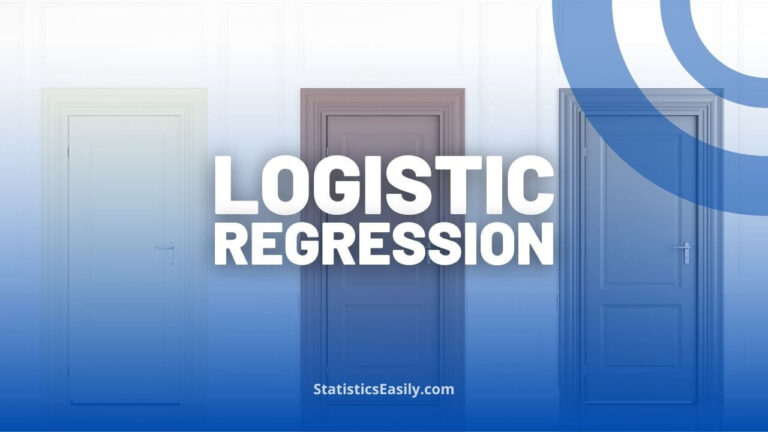How to Report Results of Simple Binary Logistic Regression
You will learn how to adeptly report results of simple binary logistic regression, ensuring clarity and adherence to APA style guidelines for impactful research communication.
Introduction
Logistic regression is a pivotal analytical tool in the research domain, mainly when the objective is to understand the relationship between a binary outcome and one or more predictor variables. This statistical method provides insights into fields as diverse as medicine, for predicting disease presence or absence, to social sciences, for analyzing binary outcomes like election results or consumer choice behaviors. Its utility in handling binary data makes it indispensable for researchers aiming to draw meaningful conclusions from complex datasets.
The American Psychological Association (APA) style is not merely a formatting guideline but a beacon for clear, concise, and ethical writing in the academic community. Its structured approach to reporting research findings ensures that studies are presented in a manner that is both accessible and replicable. Adherence to the APA style enhances the credibility of research by facilitating a consistent presentation of data, analysis, and conclusions, which fosters a deeper understanding and broader application of scientific discoveries.
Highlights
- Odds ratios reveal the change in odds per unit increase in the predictor variable.
- APA style mandates clear reporting of confidence intervals and p-values.
- Model fit in logistic regression is often assessed using the Hosmer-Lemeshow test.
- Interpreting logistic regression requires an understanding of log odds.
- Effective reporting includes a comprehensive model summary and diagnostics.
Ad Title
Ad description. Lorem ipsum dolor sit amet, consectetur adipiscing elit.
Understanding Simple Binary Logistic Regression
Simple binary logistic regression is a statistical technique used to predict the probability of a binary outcome based on one independent variable. Unlike linear regression, which predicts a continuous outcome, logistic regression estimates the probability that a given input belongs to a particular category (e.g., pass/fail, yes/no, positive/negative). This model is beneficial in fields such as medicine, where it can predict the likelihood of a disease based on risk factors, or in marketing, where it can predict consumer behavior.
The critical distinction between simple and multiple binary logistic regression lies in the number of predictor variables used. Simple logistic regression involves only one predictor variable, making it a straightforward tool for examining the effect of a single factor on a binary outcome. In contrast, multiple logistic regression includes two or more predictor variables, allowing for the analysis of complex relationships and interactions between factors.
Simple logistic regression is an entry point for understanding logistic models, providing clear insights into the relationship between a single predictor and an outcome. However, multiple logistic regression becomes essential for capturing the nuanced interplay between variables when real-world scenarios involve numerous influencing factors.
Preparing Your Data for Analysis
Data Requirements for Binary Logistic Regression
For binary logistic regression, the dependent variable must be binary, typically encoded as 0 or 1, representing the two categories of outcomes. The independent variables, on the other hand, can be continuous, ordinal, or categorical. It’s crucial to ensure that the data for these variables is accurately recorded and relevant to the research question.
Tips for Data Cleaning and Preparation
1. Ensure Binary Encoding: Confirm that your dependent variable is correctly encoded as 0 and 1. This step is crucial for the logistic regression model to interpret the outcomes correctly.
2. Check for Missing Values: Logistic regression does not handle missing data well. Impute missing values using appropriate methods, or remove records with missing data if they constitute a small fraction of your dataset.
3. Assess Outliers: Outliers can disproportionately influence the model. Investigate extreme values in your dataset to decide if they represent genuine observations or data recording errors.
4. Variable Transformation: Transforming variables might be necessary depending on your data. Consider normalization or standardization for continuous predictors to bring all variables to a similar scale, mainly if they operate in vastly different ranges.
5. Dummy Coding for Categorical Variables: If you have categorical independent variables, use dummy coding to convert these into a binary format. Remember, for a variable with ‘n’ categories, you will need ‘n-1’ dummy variables.
6. Splitting Your Dataset: Consider dividing your dataset into training and testing sets. This approach allows you to train your model on one subset of data and evaluate its performance on another, ensuring it can generalize well to new, unseen data.
Running Simple Binary Logistic Regression in R
Running a simple binary logistic regression in R involves a series of systematic steps, from setting up your R environment with the necessary packages to interpreting the model’s output. This guide will walk you through each step, ensuring you clearly understand how to perform and report logistic regression analysis in accordance with APA style.
Setting Up Your R Environment
Before running logistic regression, ensure your R environment is properly set up. This includes installing and loading the necessary packages. The ‘glm()’ function in base R is commonly used for logistic regression. Still, other packages like ‘ggplot2’ can be helpful for data visualization.
# Install necessary packages
install.packages("ggplot2")
# Load the packages into R session
library(ggplot2)
Step-by-Step Guide
1. Load Your Data: Begin by loading your dataset into R. This dataset should be prepared per the “Preparing Your Data for Analysis” guidelines.
# Assume your data is stored in a CSV file
data <- read.csv("path_to_your_data_file.csv")
2. Explore Your Data: It’s crucial to understand the structure and quality of your data before running any analysis.
summary(data) str(data)
3. Fit Your Logistic Regression Model: Use the ‘glm()’ function to fit a simple logistic regression model. Specify the family as ‘binomial’ to indicate logistic regression.
# Fit logistic regression model # Assume 'outcome' is your binary dependent variable and 'predictor' is your independent variable model <- glm(outcome ~ predictor, data = data, family = "binomial")
4. Check Model Summary: After fitting the model, check the summary to understand the model’s coefficients and overall fit.
summary(model)
Software Recommendations
RStudio: RStudio provides a user-friendly interface for R, making it easier to write code, visualize data, and interpret results.
R Packages: Beyond ‘ggplot2’ for data visualization, consider packages like ‘dplyr’ for data manipulation and ‘car’ or ‘lmtest’ for additional diagnostics.
Code Snippets for Visualization and Diagnostics
Visualizing Data: Use ggplot2 to visualize the relationship between your predictor and outcome variable.
ggplot(data, aes(x = predictor, y = outcome)) + geom_point() + geom_smooth(method = "glm", method.args = list(family = "binomial"), se = FALSE)
Model Diagnostics: Although simple logistic regression typically involves less complexity in terms of diagnostics, it’s still helpful to plot the model’s residuals or to check for the linearity assumption.
# Plotting residuals plot(residuals(model, type = "deviance")) # Assess linearity - consider creating a component plus residual plot (CR plot)
Interpreting the Results
In simple binary logistic regression, the results are often presented in terms of odds ratios, confidence intervals, and p-values, each offering a unique insight into the data.
Odds Ratios (ORs): The odds ratio represents the exponentiated coefficient of the independent variable and measures the association between the predictor and the outcome. An odds ratio greater than 1 indicates a positive association, meaning the event is more likely to occur with each unit increase in the predictor. Conversely, an odds ratio of less than 1 suggests a negative association.
Confidence Intervals (CIs): Confidence intervals for the odds ratios offer a range of values within which the true odds ratio is likely to fall, with a certain level of confidence (typically 95%). A confidence interval that spans 1 indicates that the effect of the predictor may not be statistically significant.
P-Values: The p-value assesses the probability that the observed association occurred by chance under the null hypothesis. A small p-value (typically <0.05) suggests that the association observed is unlikely to have occurred by chance, thus indicating a statistically significant effect of the predictor variable.
Importance of Model Fit Statistics
Model fit statistics evaluate how well the logistic regression model explains the data. Two commonly used statistics are:
Hosmer-Lemeshow Test: This test assesses the model’s goodness of fit by comparing the observed and expected frequencies of the outcome. A large p-value suggests that the model fits the data well.
Pseudo R-Squared: Unlike linear regression, logistic regression uses pseudo R-squared measures (e.g., McFadden’s R-squared) to indicate the model’s explanatory power. While no universally accepted ‘good’ value exists, higher values indicate better model fit.
Interpreting the results of a logistic regression involves more than just stating these statistics; it requires a nuanced understanding of their implications for your research question. For example, statistically significant odds ratios that deviate greatly from 1 (either much larger or much smaller) can indicate a strong effect of the predictor variable on the outcome. However, it’s crucial to consider the confidence intervals and model fit statistics to assess the reliability and generalizability of these findings.
Ad Title
Ad description. Lorem ipsum dolor sit amet, consectetur adipiscing elit.
How to Report Results of Simple Binary Logistic Regression
It is crucial to maintain clarity and precision when presenting the outcomes of a simple binary logistic regression analysis in adherence to APA style. This section provides a framework for reporting your findings, ensuring they are accessible and rigorously documented.
1. Objective Clarification
Begin with a concise statement of the purpose of the logistic regression analysis. For instance, the study might investigate the influence of a dietary factor (X) on the occurrence of a specific health outcome (Y).
Example: “The objective of this analysis was to assess the impact of high sugar intake (X) on the likelihood of developing type 2 diabetes (Y).”
2. Sample Size Justification
Emphasize your sample size’s significance, bolsters the analysis’s robustness.
Example: “A sample size of 400 individuals was chosen to ensure sufficient statistical power to identify high sugar intake as a significant predictor of type 2 diabetes, effectively reducing Type II errors.”
3. Model Assumptions Verification
Linearity in the Logit: The assumption of linearity in the logit for a simple binary logistic regression is that the log odds of the outcome is a linear function of the continuous independent variable. This assumption can be tested using the Box-Tidwell procedure, which involves creating an interaction term between the continuous predictor and its natural logarithm and then examining the significance of this term.
Example: “To ensure the validity of our simple binary logistic regression model, we conducted a Box-Tidwell test for the single continuous predictor variable, sugar intake. The test involves adding a product term between the predictor and its natural log transformation into the model and examining the significance of this term. The result showed a non-significant coefficient for the interaction term (B = -0.001, p = 0.789), with a chi-square value of χ²(1) = 0.07, indicating that the assumption of linearity in the logit is satisfied for our model.”
4. Model Fit Evaluation
In evaluating the fit of a simple binary logistic regression model, we employ the likelihood ratio test, denoted by a chi-square statistic, and the associated p-value, complemented by a pseudo-R2 measure.
Example: “The logistic regression model’s goodness-of-fit was assessed using a likelihood ratio test, yielding a significant chi-square statistic of χ2(1)=46.53, p < .001. This indicates that the model with high sugar intake as a predictor provides a significantly better fit to the data than a model without it. Additionally, the model’s pseudo-R2 value of 0.432 suggests that approximately 43.2% of the variability in the diabetes outcome is accounted for by the model, which is a substantial improvement over the null model.”
*It’s important to note that this is a pseudo R2 value, which, unlike the R2 in linear regression, does not represent the proportion of variance explained by the model in the traditional sense but indicates the model’s improvement over the null model.
5. Odds Ratio and Statistical Significance
When presenting the odds ratio (OR), it is essential to report its value and statistical significance and the 95% confidence interval (CI), which provides a range within which the true OR is likely to lie. This interval reflects the precision of the OR estimate. It indicates whether the predictor is a significant factor in the model.
Example: “The analysis yielded an odds ratio (OR) of 1.15 for high sugar intake, with a 95% confidence interval (CI) of [1.05, 1.25], p < .05. This indicates that for each additional unit of sugar consumed, there is a 15% increase in the odds of developing type 2 diabetes. The confidence interval suggests that the true OR is likely between 1.05 and 1.25. Since this range does not include 1, we can conclude that the increase in sugar consumption is significantly associated with the risk of developing diabetes.”
6. Model Coefficients Interpretation
When interpreting logistic regression coefficients, it’s crucial to consider the magnitude and direction of the effect and the statistical significance, often indicated by the Z value and corresponding p-value. The coefficients indicate the change in the log odds of the outcome for a one-unit increase in the predictor variable.
Example: “The logistic regression output revealed a significant coefficient for sugar intake (β = 0.14). The associated Z value of 3.20 and p-value less than .001 suggest that the effect of sugar intake on the likelihood of developing type 2 diabetes is statistically significant. Specifically, the coefficient translates to an odds ratio (OR) of 1.15, meaning that each additional sugary item consumed per week increases the odds of developing type 2 diabetes by 15%. The model’s intercept has a Z value of -3.58 with a p-value less than .001, which indicates that when sugar intake is zero, the log odds of not having diabetes is significantly different from zero, providing a baseline for comparison.”
7. Discussion on Model Adequacy and Constraints
Several vital points merit attention when evaluating the adequacy of our simple binary logistic regression model. Firstly, the Hosmer-Lemeshow test was conducted to assess the goodness-of-fit. The non-significant result (p > .05) indicates an acceptable fit of the model to the observed data. However, the pseudo-R-squared value, while helpful, is modest. This suggests that other variables may contribute to the likelihood of developing type 2 diabetes that our model does not include.
The interpretation of the logistic regression coefficients, specifically the odds ratio (OR), offers a deeper understanding of the predictor’s impact. With an OR of 1.15, we see a 15% increase in the likelihood of diabetes for each additional unit of sugar intake. This finding is significant but must be viewed within the model’s constraints. Our model does not imply causality and should be considered alongside other potential lifestyle and genetic factors affecting diabetes risk.
It is also essential to acknowledge the sample’s representativeness. If the sample does not adequately reflect the broader population, our findings’ generalizability could be limited. We must also recognize that the pseudo-R-squared value in logistic regression does not represent the variance explained in the traditional sense. Instead, it indicates the model’s improvement over the null model.
In conclusion, while our model has identified a significant association between sugar intake and the risk of developing type 2 diabetes, further research using a broader set of predictors is warranted. Longitudinal studies are particularly recommended to ascertain causality more accurately.
8. Supplementary Diagnostics and Visuals
Enhance model interpretation with additional diagnostics or visuals, such as ROC curves. Example: “The ROC curve for the model demonstrated an AUC of 0.78, suggesting a good predictive ability of high sugar intake on diabetes onset.”
Example of Reporting Simple Binary Logistic Regression Results
“In our targeted investigation into the relationship between sugar consumption and the incidence of type 2 diabetes among an adult cohort, we utilized a simple binary logistic regression model. This model was designed to predict the binary outcome of diabetes — 1 for presence and 0 for absence — based on the independent variable of sugar intake, measured by the weekly count of sugary food items consumed.
Our statistical analysis presented a significant chi-square statistic (χ²(1) = 46.53, p < .001), robustly refuting the null hypothesis and signifying that sugar intake critically predicts diabetes risk. This finding accentuates the considerable effect of dietary sugar on the likelihood of type 2 diabetes within our study group.
Additionally, the model’s pseudo-R² value, standing at 0.432, suggests that variations in sugar consumption account for approximately 43.2% of the variance in diabetes outcomes, highlighting the notable influence of sugar intake on diabetes risk. It’s essential to recognize that the pseudo-R² value in logistic regression reflects the model’s improvement over the null model rather than the proportion of variance explained as in linear regression.
The logistic regression coefficients were profoundly insightful. The significant coefficient for sugar intake (β = 0.14, p < .001) and its corresponding Z value indicate a strong and statistically significant relationship between sugar consumption and the risk of developing type 2 diabetes. Precisely, the odds ratio (OR) calculated at 1.15, with a 95% confidence interval of [1.05, 1.25], p < .05, elucidates that each additional sugary item consumed weekly increases the odds of developing type 2 diabetes by 15%. This OR and its confidence interval convey the risk increment associated with dietary sugar, underscoring the importance of moderating sugar intake.
These analytical outcomes bear significant public health implications, emphasizing the need for stringent dietary guidelines to mitigate sugar consumption. The evident linkage between sugar intake and an elevated risk of diabetes, as revealed by our logistic regression model, underscores the urgent call for educational and preventative measures to foster heal
Common Pitfalls and How to Avoid Them
In reporting simple binary logistic regression results, particularly in alignment with APA style, certain common pitfalls can compromise the clarity and integrity of your research findings. Awareness and proactive avoidance of these pitfalls are crucial for maintaining scientific rigor and adherence to ethical standards.
Overinterpretation of Results
- Pitfall: Concluding causation from correlation, especially given the observational nature of many logistic regression analyses.
- Avoidance Strategy: Clearly state that logistic regression identifies associations rather than causation. Emphasize the need for further research, possibly through experimental designs, to establish causal relationships.
Misunderstanding Odds Ratios
- Pitfall: Interpreting odds ratios as relative risks can sometimes lead to overestimating the effect size.
- Avoidance Strategy: Explain what an odds ratio represents, especially in contexts where the outcome is rare, and caution against direct interpretation as relative risk.
Ignoring Model Fit and Diagnostics
- Pitfall: Overlooking the importance of model fit statistics and diagnostic checks leads to unwarranted confidence in the model’s predictions.
- Avoidance Strategy: Include and interpret model fit indices such as the Hosmer-Lemeshow test and report any diagnostic tests performed, such as the Box-Tidwell test, for linearity in the logit. Discuss the implications of these findings for the model’s reliability.
Inadequate Reporting of Confidence Intervals and P-values
- Pitfall: Focusing solely on point estimates like odds ratios without considering the precision and uncertainty of confidence intervals and p-values.
- Avoidance Strategy: Always report confidence intervals, p-values, and point estimates to provide a complete picture of the statistical findings. This approach not only aligns with APA standards but also enhances the transparency and replicability of your research.
Lack of Clarity in Presenting Results
- Pitfall: Presenting results in a manner that is difficult for the intended audience to understand, which can obscure the research’s implications.
- Avoidance Strategy: Use clear, non-technical language whenever possible and consider the use of visual aids, such as tables and figures, to illustrate key findings. Ensure that all visuals are clearly labeled and conform to APA style.
Failure to Discuss Limitations
- Pitfall: Not acknowledging the limitations of your logistic regression analysis, including potential confounders and biases, can mislead readers regarding the robustness of your conclusions.
- Avoidanc
Ad Title
Ad description. Lorem ipsum dolor sit amet, consectetur adipiscing elit.
Conclusion
In this comprehensive guide, we have navigated the essential aspects of reporting results of simple binary logistic regression in a manner that upholds the principles of clarity, precision, and adherence to APA style. Key points included:
- The importance of stating the research objective with precision.
- Justifying the sample size for robust analysis.
- Verifying model assumptions with appropriate statistical tests, such as the Box-Tidwell test for linearity in the logit.
- Meticulously evaluating model fit with indices like the Hosmer-Lemeshow test.
We delved into the nuances of interpreting and reporting odds ratios, confidence intervals, and p-values, emphasizing the significance of accurately presenting a complete statistical picture to convey the findings. The guide also highlighted common pitfalls in the interpretation and reporting process and offered strategies to avoid them, thereby enhancing the reliability and integrity of research findings.
As researchers and practitioners in statistics and data analysis, the journey of learning and improvement is perpetual. This guide serves not only as a tool for mastering the reporting of logistic regression results but also as an encouragement to delve deeper into the vast and ever-evolving landscape of statistical analysis.
Recommended Articles
Explore our rich collection of articles for more in-depth guides and tips on statistical reporting. Dive deeper into the world of data analysis with us!
- How to Report Chi-Square Test Results in APA Style: A Step-By-Step Guide
- How to Report One-Way ANOVA Results in APA Style: A Step-by-Step
- How to Report Cohen’s d in APA Style
- APA Style T-Test Reporting Guide
- What Does Odds Ratio Tell You?
- Mastering Logistic Regression (Story)
- Logistic Regression – an overview (External Link)
- Logistic Regression Using R: The Definitive Guide
- How to Report Simple Linear Regression Results in APA Style
- How to Report Results of Multiple Linear Regression in APA Style
Frequently Asked Questions (FAQs)
It’s a statistical analysis method based on log odds to predict a binary outcome from a single predictor variable.
APA style ensures clarity, uniformity, and precision in academic reporting, facilitating better understanding and replication of research.
Odds ratios greater than 1 indicate increased odds of the outcome with each unit increase in the predictor, and vice versa.
Model fit statistics, like the Hosmer-Lemeshow test, assess how well the model’s predictions match observed outcomes.
To indicate precision and significance, report confidence intervals around odds ratios and p-values for each predictor.
Common errors include misinterpreting odds ratios, neglecting model diagnostics, and unclear presentation of results.
Continuous predictors can be used in logistic regression, often requiring careful consideration of scaling and distribution.
For reliable inference, check for linearity in the logit, absence of multicollinearity, and large sample size.
This test evaluates the model’s goodness of fit, indicating how well it fits the data.
Enhance reporting by providing detailed model output, interpreting results contextually, and adhering strictly to APA guidelines.








